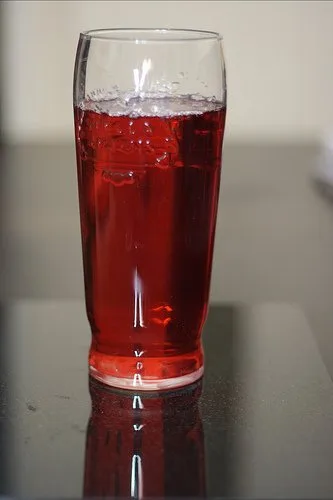The tart, bright flavor of cranberry juice makes it a refreshing beverage to drink in the summer, as well as a great cocktail mixer year round. Of course, after you’ve made a few drinks, you might realize that a good portion of the bottle is left over. Can you keep the opened bottle in the pantry, or can cranberry juice go bad?
What is Cranberry Juice?
Cranberry juice is made from cranberries, a very tart berry that typically grow in marshlike areas of Europe and North America. The berry is said to have medicinal properties, and so unsweetened cranberry juice actually plays a large role in folk remedies! For commercial purposes, unsweetened cranberry juice is too tart for many people to enjoy, and so sugar is added to make the drink more appealing.
Cranberry juice is the basis for many mixed drinks, but is also enjoyed as a beverage on its own. Many commercial brands mellow out the tart taste of the cranberries by blending the juice with other fruit varieties like grapes and apples. These juice cocktails are widely available in supermarkets, and tend to be on the sweeter side.
Image used under Creative Commons from Sam-Cat
Can Cranberry Juice Go Bad?
Like all fruit juices, cranberry juice can certainly go bad. An unopened bottle of cranberry juice will last up to nine months past the printed expiration date, at room temperature. However, as soon as the bottle is opened, the shelf life decreases dramatically. Once opened, a bottle of cranberry juice will remain fresh in the refrigerator for around three weeks.
Though some sources indicate that an open bottle of cranberry juice can stay fresh at room temperature for up to a week, this is not recommended.
Canned cranberry juice concentrate will stay fresh in the freezer for up to a year.
How to Tell If Cranberry Juice Has Gone Bad?
Visual cues are a great way to see if cranberry juice has begun to spoil. Always look at the juice for signs of mold, or other contaminants. Like many other beverages, cranberry juice is likely to grow mold if left too long. Once mold has begun to grow, the juice has spoiled and should no longer be consumed
Little bubbles that float up are another sign that the juice may have spoiled. These bubbles can indicate that the juice has begun to ferment. If you suspect fermentation is occurring, smell the juice – if it smells sour, or like wine or vinegar, it has spoiled and should not be consumed. Similarly, if the bottle is bulging or appears to have puffed out, there is likely some fermentation present, and the juice should be discarded.
While sediment may seem to indicate spoilage, this is actually a normal part of many brands of cranberry juice, especially those found in health food stores. Check for other signs of spoilage before assuming the sediment indicates something has gone wrong!
Can You Freeze Cranberry Juice?
Freezing cranberry juice is an excellent way to extend its shelf life. Cranberry juice can be frozen in its original container, or any tightly sealing, freezer-safe container. Be sure to pour some out to leave room for expansion. Frozen cranberry juice will last in the freezer for up to a year, and can be thawed overnight in the refrigerator, with no noticeable taste or texture changes. As soon as the cranberry juice is thawed, you can drink it as normal.
Try freezing cranberry juice in ice cube trays, and then transferring the cubes to a sealed container. The cubes can be used to chill drinks without watering them down, as well as blended into smoothies for a little bit of extra flavor!
